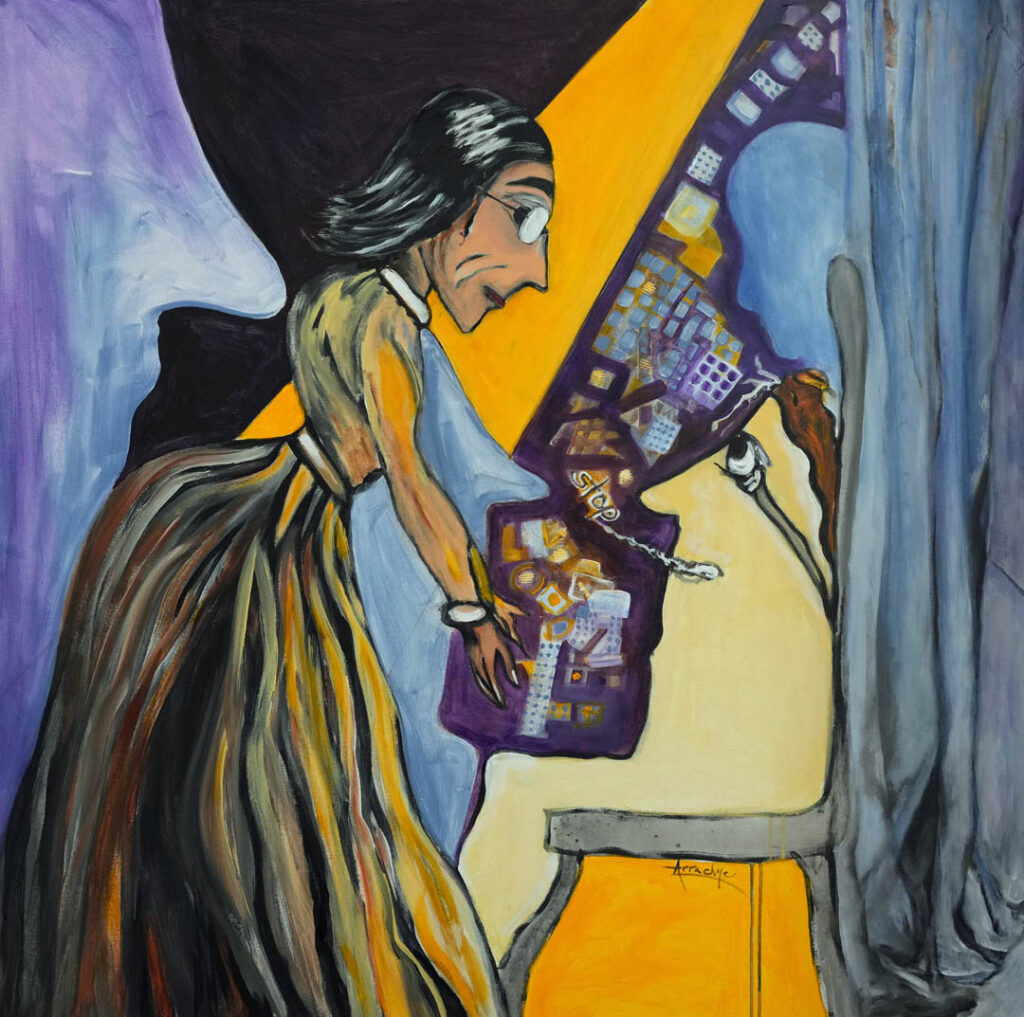Article #24 Do All Artists Understand Each Other?
by Arrachme
Just like any profession, not all artists speak the same language. One analogy is the field of medicine. An eye surgeon and an orthopedic surgeon may enter medical school at the same place. Both end up as surgeons and both are doctors. After basics, they branch off into their chosen field. It makes sense that they will branch off into differently developed professional languages, as well.
The same is for artists. They may have similar educational beginnings where the elements and principles of design are the same, but when they branch off into their chosen specialty/genre their language and understanding can be very different.
What Else Can Impact Differences?
One factor is artistic career preference. It might be safe to say that artists move into different visual language circles based on their achievements. How far their ambition takes them will affect their final artistic language. If they decide to choose art as a full-time career as opposed to a hobby, their required life experiences will move them into a different area of the art world. During decades of daily, dedicated hard work they will naturally discover other artists that speak their same language. The art world is a complex place with many nuances that cannot be described, rather they must be experienced. The distance can impact artists’ finding colleagues. In Europe, it is easy to catch a plane or train to see other artists with similarities. In America, we rely on modern technology, like Zoom and Facebook to bridge the gap.

What Are the Languages?
Language differences can also relate to genre/style. An example is to note the difference between a non-objective abstract oil painter and a watercolorist. Creating watercolor and colored pencil art can be mostly left-brain activities. They tend to include illustration as a focus. Aspects of this art form require bending over a desk and focusing usually on drawing and measuring to make sure that the forms are perfectly aligned. Forms of graphic art can also include similar characteristics.
It is not always the case, but I find that my students that lean into these genres enjoy realism and the challenge of precision. These forms have specific rules and languages. Checklists can be formed for competitions. This makes life easier for curators that are tasked to judge events.
The nonobjective painter’s approach is different. They can come fully out of the right brain. For the most part, they are painting what they feel. Their left brain is on autopilot. This is not to say design principles are void. Just the opposite. To paint successful nonobjective or abstract art the foundations of fine art must become second nature. One must know the rules to break them with finesse. The finished art activates undeniable emotion in the viewer. One important factor is that in this genre, the artist is not competing with others, rather they only compete with themselves. As you probably guessed, the curators of this area will need to have a deeper understanding of art history and be in touch with their feelings and emotions. To judge this type of art one must have a wide birth of knowledge. Enclosed is my painting “Captivated”. It is a contemporary abstract that evokes emotion.
My students have a variety of different styles of painting. I can identify their origins from the language and visual language that they use. It is not that one type of art is good or bad. They are simply all unique and different. This is why a room full of artists may sound like people speaking or demonstrating different dialects. Fascinating!
